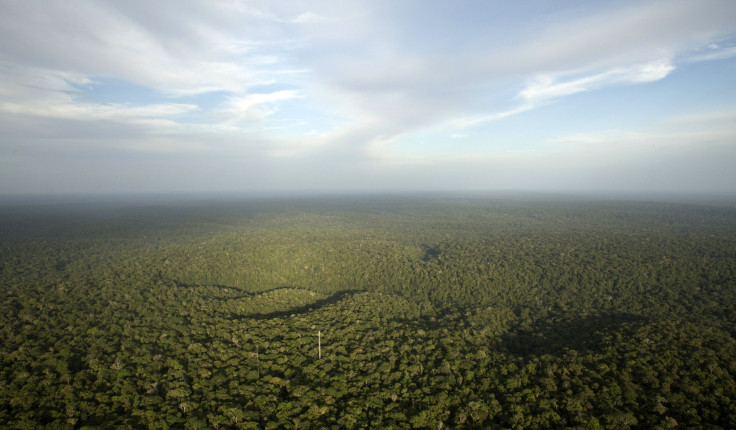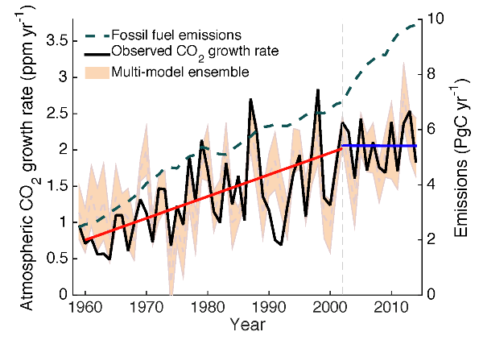Climate Change: Increased Carbon Uptake By Plants Has Slowed Rise In Atmospheric CO2, Study Reveals

Recent observations have shown that the concentration of carbon dioxide in Earth’s atmosphere has, perhaps permanently, crossed the symbolic red line of 400 parts per million. However, even as human activities continue to raise the level of atmospheric carbon dioxide, a new study has suggested the rate at which this rise is taking place has plateaued in recent years.
The study, published Tuesday in the journal Nature Communications, is based on extensive ground and atmospheric observations of carbon dioxide, satellite measurements of vegetation and computer modeling. According to the researchers, between 2002 and 2014, the rate at which carbon dioxide increased in the atmosphere held steady at about 1.9 ppm per year — after climbing steadily during the later half of the 20th century — and the proportion of the gas emitted annually by human activity that remained in the atmosphere declined by about 20 percent.
This was largely because the increase in carbon dioxide concentration in the atmosphere enhanced photosynthetic activities in plants, and because plant respiration — a process that releases carbon dioxide — did not increase concomitantly.
“These changes decreased the amount of anthropogenic CO2 that stays in the atmosphere, and thus slowed the accumulation of atmospheric carbon dioxide,” lead author Trevor Keenan, a research scientist the Lawrence Berkeley National Laboratory in California, said in a statement.
In total, ocean- and land-based flora currently remove about 45 percent of the carbon dioxide emitted due to human activities each year. And, over the past 50 years, the amount of the greenhouse gas absorbed by the oceans and terrestrial biosphere annually has more than doubled.
However, the authors of the study were quick to point out that this was nowhere near enough to offset the billions of tons of carbon dioxide that we are dumping into the atmosphere every year.

“Unfortunately, this increase is nowhere near enough to stop climate change,” Keenan said. “We’ve shown the increase in terrestrial carbon uptake is happening, and with a plausible explanation why. But we don’t know exactly where the carbon sink is increasing the most, how long this increase will last, or what it means for the future of Earth’s climate.”
The year 2015 was the first time in human history when the 400 ppm carbon dioxide barrier was breached on an average for an entire year. This unprecedented rise in global carbon dioxide concentrations — driven largely by fossil fuel emissions, and aided, at least partly, by an extremely strong El Niño that has been linked to droughts and wildfires in tropical regions — also marked the largest annual increase on record.
The true significance of this can be understood when you realize that the last time the carbon dioxide levels were consistently above the 400 ppm mark was 3 to 5 million years ago — a time when the Homo genus we belong to was yet to appear on the face of Earth.
Given the current trajectory of emissions, many believe it is only a matter of time before pre-industrial levels of atmospheric carbon dioxide — approximately 280 parts per million — are doubled. If this happens, there is nothing that can be realistically done to keep the rise in global temperatures to below 2 degrees Celsius — something that last year’s Paris climate treaty commits to.
© Copyright IBTimes 2025. All rights reserved.






















